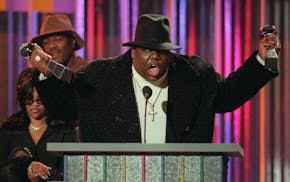If perennials are the sensible shoes of the garden, then annuals are the sparkly flip-flops of the flower bed — one-season wonders that make you smile and provide easy color all summer long.
Now is a great time to peruse the seed section of your local garden center or favorite catalog and start planning how you'll use these cheerful blooms once the ground warms up.
Annuals have just one job, to spread large quantities of seed to assure their future existence. Much to our benefit, they accomplish this mission by flowering nonstop until frost. Take advantage of their colorful enthusiasm. Many are simple to start from seed, sowing directly into the garden once the threat of frost has gone. If you miss the seed-starting window, you'll find that many garden centers are expanding their selections of ready-to-plant annuals beyond the usual marigold and begonia rut.
This is where the fun comes in. Perennials require planning and permanence, but with annuals you can afford to be more creative, a little crazy — it's just a one-summer commitment, after all. Try some bolder color combinations or unique varieties — or perhaps the same-old/same-olds but with a different planting style.
Take a cue from fashion and use color-blocking — large numbers of one color planted in a mass. Big blooms in bright colors, such as orange, hot pink, taxicab yellow or blaring purple, that might seem gaudy up close are often appealing when seen from the curb or sidewalk. Landscape designers call that legibility — how we read the garden from a distance.
To tie color-wheel neighbors and opposites together, consider an unlikely source: green flowers rather than foliage. Lime-green annuals act like a neutral to bind these saturated colors into pleasing compositions. Search out verdant-color varieties of nicotiana, amaranth, bells of Ireland, 'Envy' and 'Queen Lime' zinnias, gladiolas, lisianthus and celosia.
Echo colors in a monochrome planting, and use annual veggies' foliage to carry out the color scheme: flowers in varying purple shades with purple kales, reds or pinks with the same-color-stemmed 'Bright Lights' chard.
Create a temporary meadow with annuals by randomly interplanting different shapes, heights and textures. Use a few airy "see-through" plants to enhance the effect, such as Brazilian verbena (Verbena bonariensis), tassel flower, poppies, Queen Anne's lace or Ammi majus, gaura, cosmos, dill or fennel. Mix with annual grasses here and there.
Annuals to try A-Z
Agastache: Sometimes called hummingbird mint for good reason, this is a tender perennial used as an annual in Minnesota. Gray-green foliage (some smell like root beer) with tubular blossoms in different sunset colors. Height varies according to variety. Adds texture to the flower bed, while attracting hummingbirds by the score.
Ageratum: There's the short variety, and then there's the taller Cutting Ageratum that stands up and out. Beautiful tufts of Delft blue on wiry stems above sturdy foliage. Pairs prettily with orange or deep-pink flowers.
Cerinthe: Also known as honeywort, a subtle beauty that grows on you. Blue-green leaves with drooping stems bearing bell-like blossoms in amethyst blue fading to deep purple. It looks gorgeous with lime-green foliage or purple tones.
Cosmos: Lots of new types that retain old-fashioned looks. 'Cupcake' in white or pink has a deep cup shape. Pale yellows are now found in 'Lemonade' and 'Xanthos.'
Dahlias: Technically these are tubers that you stress about saving. But think of them as one-shot annuals, and there are so many wonderful colors and luscious petal forms. Shorter bedding varieties give you big color in small spaces.
Salvia: Striking 'Black and Blue' has been around for a while. New colors like 'Wendy's Wish' in magenta and 'Ember's Wish' in ombre pink to peach broaden salvia's appeal. These taller versions of the familiar short salvias are prolific late-season bloomers that lure hummingbirds.
Sunflowers: So many shapes and sizes, branchy container varieties like 'Sunray' or statuesque 'Sunzilla'. White, yellow, orange, bronze, burgundy and more to explore.
Tithonia: Mexican sunflower will grow to 5 feet tall with branches of velvety leaves. Put it in a warm southern exposure and it will yield burnt-orange flowers by the dozens from midsummer onward. Imagine a row of them along a sunny but neglected garage or driveway strip. Attracts butterflies in droves.
Zinnias: Beyond the crayon color mixes there are single-color seed packs that promise stunning looks plus pretty bouquets. Check out shaggy orange 'Mighty Lion,' Minnesota-appropriate 'Purple Prince,' salmon-shaded 'Señora,' pristine 'White Wedding' and elegant red 'Moulin Rouge.'
Some annuals like marigolds, cosmos, dahlias and zinnias need deadheading; the more you pick the more they produce. As the season progresses, some annuals like petunias, lobelia and alyssum will bloom to exhaustion. If stems lengthen and blooms thin around midsummer, cut back and apply a liquid fertilizer to rejuvenate. Otherwise sit back and enjoy the show until it's time to put the flip-flops away.
Rhonda Fleming Hayes is a Minneapolis-based garden writer who blogs at thegardenbuzz.com. She is the author of "Pollinator-Friendly Gardening: Gardening for Bees, Butterflies and Other Pollinators," available at Amazon.com.

Salman Rushdie's 'Knife' is unflinching about his brutal stabbing and uncanny in its vital spirit

